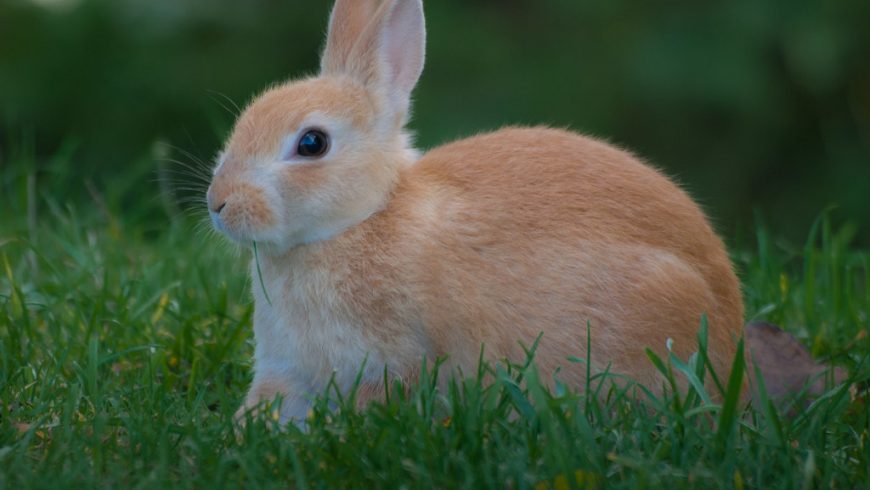The rabbit (Oryctolagus cuniculus) was domesticated rather recently as compared to other farm animals. They were kept in captivity in Western Europe for meat and fur production since Roman times but were not actually domesticated until the middle age (Zeuner, 1963). The animal might have its original home either in Africa, Spain, Belgium or in Rome. It is believed that wild rabbits were used for meat in Africa at least 3000 years ago.
In recent years, the rabbit has not only been utilized extensively for biomedical research as laboratory animals but also the importance of this animal as a supplier of meat for human consumption is widely recognized throughout the world. It also provides useful pelts, wool, fur and manure. Many rabbits are simply raised as pets.
Rabbit meat is a wholesome and tasty product with a high biological value compared to most other meats. It is high in protein (20.8%) and low in fat, cholesterol and sodium. Cholesterol content in rabbit meat is 39 mg/100 gm fresh meat (Rao et al., 1979) compared to 91, 60, 70, 70 and 65 mg/100 gm of fresh chicken, pork, veal, mutton, and beef, respectively. The fat of rabbit carcasses contains less stearic (6.3) and oleic acids (31.2%) than that of other species and a higher proportion of essential polyunsaturated fatty acid. The meat is white, fine-gained, delicately flavored, nutritious and appetizing. Thus, it is not only highly nutritious but also suitable as a special diet for heart disease patients and aged people (Rao et al., 1979).
In India, the present daily availability of meat is 6-8 g for 70 percent of the non-vegetarian population by 2000 A.D. (Agnihotri and Pal, 1994). It is far below the Indian Council of Medical Research (ICMR) recommendation of 34 g/day. Rabbit can play a crucial role in meeting the critical meat shortage in developing countries as a promising alternative source to common meat.
Rabbits grow rapidly and their growth rate is comparable to that of broiler chicken. The period taken to reach the slaughter weight is much less than for other livestock such as cattle, sheep, and goats. In respect of nutrition, the rabbit occupies a niche midway between ruminants and mono-gastric animals. Rabbits can convert 20 percent of the proteins they eat into edible meat as compared to 22-23 percent by broiler chicken,16-18 percent by pigs and 8-12 percent by beef cattle. The rabbit has been, therefore, rightly described as the poor man’s pig. Rabbits are also termed as micro-livestock since they can be raised by small farmers with simple housing and small quantity of feed. Rabbits act as biological refrigerators since the meat from one animal can be consumed without the need for storage due to the small size of carcasses.
For commercial meat production, the New Zealand White is the principal breed as it has number of desirable traits including a rapid growth rate, good carcass quality, good prolificacy and good mothering ability. In India, rabbitry is being brought forward only recently as a new form of animal husbandry. Therefore, systematic works on its management, feeding, breeding and awareness of farmers are still awaited for efficient meat production.
References:
Agnihotri, A.K. and Pal, D. (1994). Meat production in India. Indian J. Med. Sci. 53: 235-238.
Rao, D.R.; Chawan, C.B.; Chan,C.P. and Sunki, G. R. (1979). Nutritive value of rabbit meat. In: The Domestic Rabbit: Potentials, Problem and current Research. P.R. Cheeke, Ed. pp. 53-59.
Zeuner, F.E. (1963). A History of Domesticated Animals. London Hutchinson, cited from Owen, J.E. World Animal Review. 32: 2-11.
List of authors:
- Gunaram Saikia, Professor, Department of Animal Nutrition, College of Veterinary Science, AAU, Khanapara, Guwahati, Email: gunaram.saikia@aau.ac.in
- Mamata Joysowal, Assistant Professor, Department of Animal Nutrition, College of Veterinary Science, AAU, Khanapara, Guwahati, Email: mamtajaiswal525@gmail.com
- Bibeka N. Saikia, Professor, Department of Animal Nutrition, College of Veterinary Science, AAU, Khanapara, Guwahati, Email: bibekas.saikia5@gmail.com
- Lakhya J. Borah, Assistant Professor, Department of Animal Nutrition, College of Veterinary Science, AAU, Khanapara, Guwahati, Email: lakhyajyotiborah@aau.ac.in




